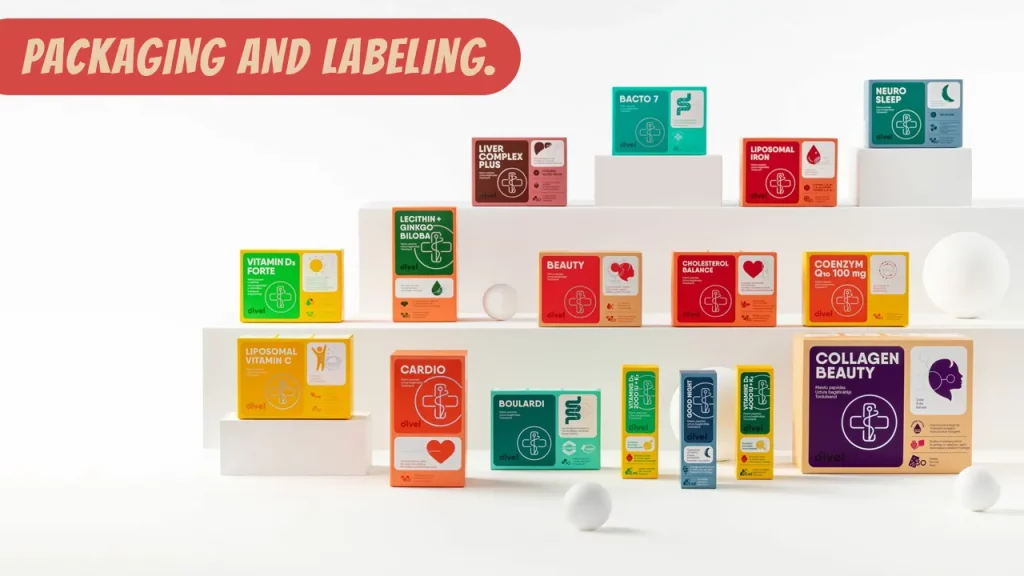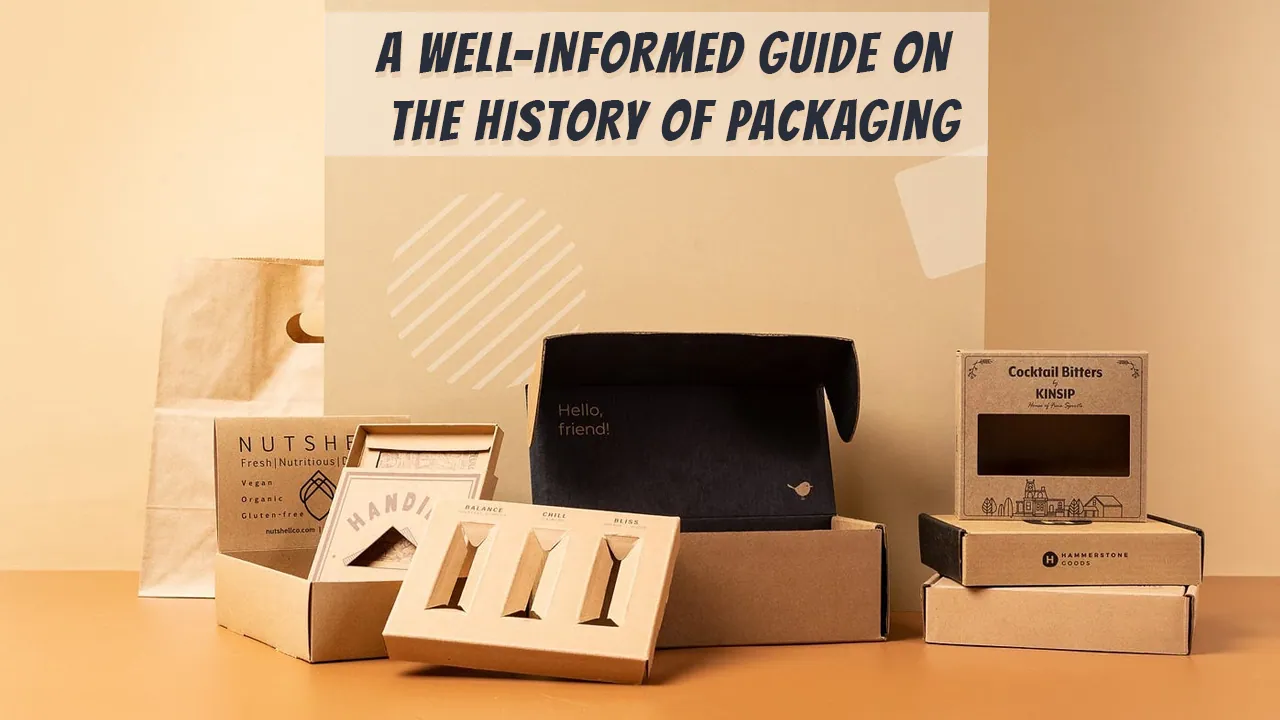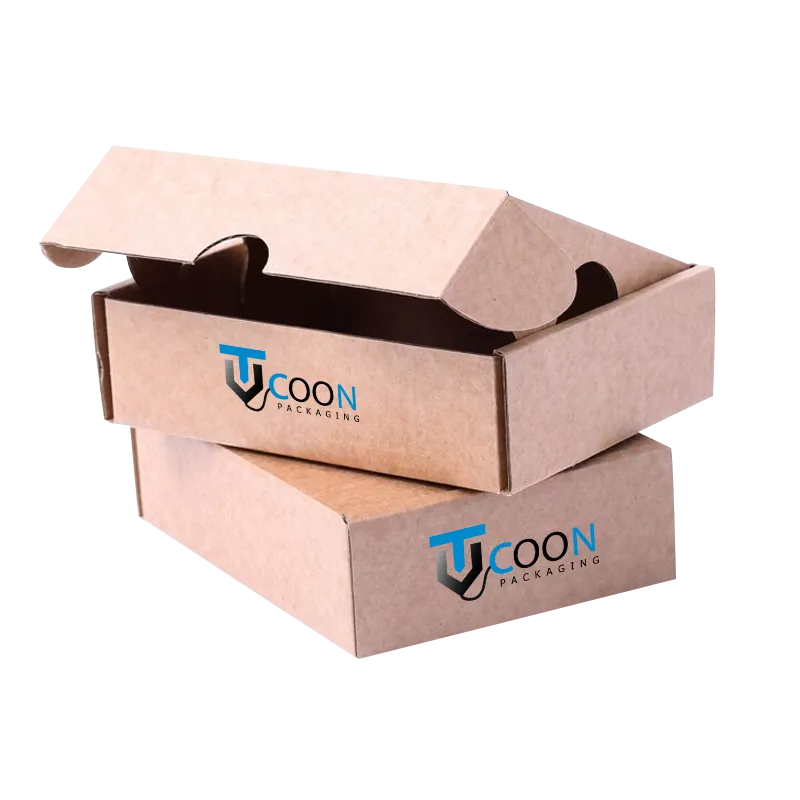Since the beginning of human civilization, there has been a requirement to transport, store, and enclose materials. But over time, packaging has evolved from being a means of meeting needs to being an essential component of an organization’s messaging and customer experience.
Human desires and needs are ever-changing. The packaging techniques for new and inventive products change along with the products themselves. There have been numerous different product packaging techniques throughout the evolution of humanity, and each one was novel. One thing never changes throughout the packaging’s history: the primary focus is on the customer.
Now let’s go back in time and look at the key technological developments that have impacted the packaging business throughout the years and helped to form it into the entity it is right now.
Let’s get a better knowledge of custom packaging before delving into its history!
What Does Packaging Mean?
These days, rigid packaging plays an integral part in the financial system. Furthermore, it has contributed to the commercial advancement of our civilization. Additionally, as a representation of a brand’s goods, unique product packaging serves as the initial point of contact with consumers.
Before choosing to buy any goods, most consumers will initially have a glance at the packaging.
True enough, as the saying goes, “We purchase anything with our eyes.” However personalized packaging is much more than just a way to package a product.
Explore the top 6 functions that custom retail packaging plays in today’s commercial environment!
- Keeps The Product Safe.
Product packaging’s most fundamental purpose is to safeguard the contents within. Packaging must protect the item from harm while it is on the display unit and ensure its safety during transportation from the manufacturer to the store.
Moreover, packaging for products thus has to be durable and dependable. Many businesses use locks and closures in their product packaging to deter damage and further guarantee the authenticity and security of the goods.
Customers want their goods to work exactly as designed, and the most optimal approach to guarantee that it does is with reliable, secure packaging.
- Decent Packaging Raises The Standing Of Your Business.
By employing packaging that is resilient and ensures that the item reaches your customers on schedule, at all times, you may enhance their positive perceptions of your business. The packaging of goods significantly impacts customers, so make sure to take advantage of the promotional benefits that packaging provides.
First glances matter! When opening the box to check out your item, your buyer first views the box itself. Packages can help you stand out from the competition and establish an enduring impression on your customers.
- A Significant Return On Investment (ROI) Can Result From Proper Packaging.
Customers can request an exchange for the damaged product or a full reimbursement of the purchase price if dents or breaks are discovered in the merchandise. Therefore, this aspect has the potential to harm the brand’s reputation. Refund requests may significantly reduce your profit from purchases.
However, the customer can also decide to shop elsewhere if they are dissatisfied with the state or craftsmanship of your product. You can shield the item you’re selling from future harm if you apply contemporary packaging technology. Your products should therefore make your customers happy with them.
- Consumer Of Your Products Will Become Loyal.
Specific packaging elevates brand exposure, which nurtures consumer loyalty. Clients are more willing to stick with the company you run, occasionally even for life if they readily recognize an item they adore and desire to purchase.
Buyers are also more inclined to buy the goods repeatedly in the years to come when the packaging gives it a more premium sense. You gain more devoted customers as a result of your investment in personalized product packaging choices.
- Stronger And Longer Connection With People:
Customers feel more connected to their favorite company when they can quickly recognize the item you sell. Customized packaging can, in this way, leave an indelible mark on customers, helping them to gradually know what you’re about on an instinctive level.
Additionally, personalized packaging for items might improve customer satisfaction. It gives your goods the “wow” effect by making them seem more sophisticated and appealing. You could, for instance, create packaging that holds your goods in place and makes it evident as soon as the buyer uncovers it. This strengthens the favorable initial perception.
Lastly, it facilitates the client’s access to the goods. You may design an item’s packaging that both safeguards your item and makes it simpler for customers to remove once they have purchased by customizing it to their needs.
- With appropriate packaging, we have options that we might not otherwise have:
The flavor of freshly transported fish from thousands of miles distant is available to the public. Due to packaging, folks may acquire raw nuts like cashews and walnuts from the state of California, which is recognized for having the greatest walnuts and almonds, to any location in the globe with the same flavor and aroma while they are being shipped.
A Brief History Of Packaging
In ancient times, leaves and other natural materials were used in packaging. Afterward, items like pots and woven fabrics were produced in large quantities. Packaging made of glass and wood is thought to have been around for more than 5,000 years.
The very first metal container, a sheet metal “canister,” was patented in 1823 by Englishman Peter Durand. In 1900, the first double-sewed three-peace can be utilized. In the 1900s, cardboard and paper started to play a significant role in packaging. Paper was gradually replaced by plastic as a packaging medium after its introduction.
After World War 2, plastics have become widely used in packaging industries. During the war, polyethylene was widely available in the marketplace because of its high production during that time. Initially, it took the place of wax paper that was employed to package bread.
Since the 1970s, the use of plastic has grown at an accelerated rate. These precious substances have been substituted with more appropriate and cost-effective materials including metals, glass, papers, plastics, and cardboard due to technological advancements and environmental conditions.
Years ago, packaging served just as a means of storing and transportation; now, with the introduction of novel materials, it is also serving as a means of product advertising. Packaging is currently encompassed by the marketing approach. This is because packaging distinguishes similar products that are arranged side by side on racks.
The Development Of Packaging and Labeling.
Given that humans have always needed to move, store, and safeguard their belongings, the history of packaging is among the earliest tales in the history of mankind.

Since the dawn of time, commodities have been protected during transportation, and information has been communicated through labels and packages. Oil merchants utilized terracotta vessels as early as Ancient Greece. They preserve their goods and mark them with cloth or papyrus labeling.
Organic substances like woven looms, fruit shells, and woven leaves from palms were used to make the earliest containers. However, the packaging sector has experienced a significant change over time.
The graphic item was attached to the containers flawlessly, and it was instantly identifiable as to who had created it, what it was meant for, and how it should have been utilized. Additionally, each item was given a distinctive container that set it apart from the rest of the items. For instance, wine, which is traditionally thought of as a convivial item, was kept in big containers or demijohns, while scented oils were located in smaller bottles, signifying the considerable worth they portrayed.
Significant technological advancements in packaging have occurred over time. Encouraging and intricate labels have been made feasible by color printing, while the manufacture of cardboard and paper materials has allowed for the development of ever-stronger and more resilient boxes and packaging.
Why There Is The Necessity Of Evolution Of Packaging?
Due to increased regulations and globalization, the packaging sector is rapidly changing to produce new, economical goods that offer the best protection against pollution, establish brand identity, and function as a major tool influencing distribution routes. Twenty years ago, packaging technologists did not have the wide range of job duties that they have now due to advancements in re-engineering.
Packaging technology exists now as a separate entity. It was just a routine aspect of quality assurance years ago. It now functions as an independent department within the industry and is essential to all advancements.
The past two decades have seen massive growth in the research sector due to the growing significance of packaging specialists and the increasing availability of packaging supplies in the retail sector.
With the following objectives in mind, the whole procedure established a stronghold:
- To keep the item intact and prevent leaks or spills throughout the production process and the delivery to the customer.
- To guard against contagion or harm. An item needs shielding from falls, crushes, humidity, light, airborne pollutants, and frantic movement while in transportation.
- To recognize and showcase the organization – The primary means of product identification and advertising is through their packaging. The package is what the consumer recognizes when they go shopping and, according to the producer, it indicates the goods within. As a result, it encourages sales and develops the company’s reputation.
- Safeguarding during Transportation and Simplicity of Transportation – It is important for the packaging to facilitate easy lifting, moving, and transportation of items. It is possible to pile a regular-shaped container (such as a cuboid) without wasting a lot of room. This implies that the box can hold more parcels for transportation. This makes logistical and supply chain systemization possible.
- Storage and stacking- The efficiency with which packaging may be built or kept in warehouses or wholesalers’ inventories is determined by its shape and design.
The Era Of Modern Packaging
These days, the packaging sector encourages and helps entrepreneurs to develop novel methods to lessen its negative environmental effects. Sustainable technologies like compostable and edible packaging show how society is becoming more aware of environmental issues and how the packaging sector is prepared to change and advance to better serve everyone’s interests in the long run. However, additional parliamentary and executive assistance from national and international organizations is required for more rapid and significant change. Comparable to the significant transformations that packaging has undergone in the last 2,500 years.
FREQUENTLY ASKED QUESTIONS
What is the oldest form of packaging?
Paper may have been the first material used for “flexible packaging,” as it is known today. Food was wrapped by the Chinese as early as the beginning of the third or second century B.C. with sheets of prepared mulberry bark. The process of creating paper was improved throughout the following 1,500 years, and it was eventually brought to Europe, the Middle East, and the UK around 1310.
What are traditional packaging materials?
Traditionally, natural materials including leaves, timber, bamboo, rattan, and fibers have been used in packaging. Adding a visually appealing packaging layout can raise the item’s apparent worth considerably, which will boost purchases in the end.
Which kind of packaging is most frequently utilized?
Boxes made of plastic.
These packaging materials are frequently used due to their low cost, recyclability, resistance to physical damage and chemical rust, and ability to be reused.
What are the old packaging methods?
The first packaging was made from natural materials that were easily accessible, including:
Wooden boxes, bota bags, wooden barrels, clay vessels, ceramic amphorae, and woven bags. As packaging boxes were invented, refined components were employed to form them: the first being glass and metal jars.
A REVIEW
Packaging has evolved from using simple materials and procedures to using containers that exist in nature. This growth was facilitated by several elements, including people’s demands and worries, competitive markets, unexpected occurrences (like wars), changing lifestyles, and breakthroughs and innovations.
The packaging sector has transformed over the last 20 years due to customer concerns about the negative environmental effects of packaging. Packaging companies have spent an estimated $200 billion over the last 20 years refining packaging to have fewer adverse effects on the environment. Similar to how no one factor was able to shape historical development, different factors will still be needed to shape future packaging designs.
To sum up, throughout the history of commerce and the selling of goods, packaging has always been significant. You can get adorable custom packaging from Tycoon Packaging. Just get in touch with us anytime you want!
Have A Good Day!



